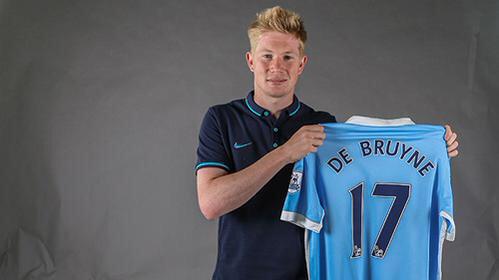The summer transfer window in England saw plenty new players arriving at various Premier League clubs. But Manchester City’s acquisition of Kevin De Bruyne was the pick of the lot solely because of the amount of money that was spent on the Belgian international.
The De Bruyne transfer was sealed in the later parts of the window, weeks after the 2015/16 league season had already started, and Manchester City had to cough up a club record £51m, a month after the club parted with £49m to bring in 20-year-old Raheem Sterling from Liverpool.
While Sterling’s capture is understandable — City were lacking in raw pace up front last season when David Silva and Samir Nasri were the wide players in a 4–4–2 system and Sterling adds to the side some much-needed speed in the attacking third for quicker transitions — De Bruyne’s signing has left a few question marks hanging.
Last season, De Bruyne was comfortably the best playmaker in the Bundesliga; he towered over his peers by serving on a platter 21 goals for his team-mates to score. But most of his contributions for Wolfsburg came when he was deployed as an attacking midfielder by manager Dieter Hecking.
The Wolfsburg side of 2014/15 wasn’t an overly attacking, possession-based, ball-hungry side and De Bruyne’s role as the attacking midfielder wasn’t rigid; he was allowed more freedom to express himself which in turn brought forth his creative side of the game and consequently resulted in him making the move to Eastlands.
Taking a statistical standpoint, a whopping 94 percent of De Bruyne’s goals last season came when he played primarily as the attacking midfielder, and 78 percent of his assists as well. This clearly points to the fact the Belgian is a more natural fit and more effective in the ‘10’ space, or as a ‘number 10.’
Which brings to light a burning question — have Manchester City brought in a player whose best position is exactly similar to the best position of the club’s current best player, David Silva? Silva has been in inspired form early doors into the new season, as he already has four assists to his name, two of which he provided from the ’10’ space.
There is no doubt De Bruyne can play in positions off centre; he played on the wide right for Belgium last night in their Euro 2016 qualifier against Bosnia-Herzegovina but his goal came from the central area, right in front of the 18-yard box. In general play, De Bruyne drifts infield which indicates he thrives in a free role. But how much freedom he is allowed at his new club is open for debate.
De Bruyne hasn’t even kicked a ball for Manchester City, and there is no doubt Manuel Pellegrini will have clear ideas about bringing the best out of his club’s record signing. But from distance at least, it looks as if Silva’s influence could take a hit if he plays together with De Bruyne. Or it could also be that De Bruyne fails to recapture his Wolfsburg form by playing in a more constricted set-up.
Manchester City now have two guaranteed starters almost similar in attributes who revel in similar roles on the pitch. With Silva in fine form, Pellegrini has a pleasant conundrum to fit in both players in the starting eleven in a way their respective qualities are maximised, while taking care of the fact both players aren’t getting in the way of each other.
Manchester City’s fine summer of spending came to a stop at the closure of the transfer window on Tuesday, and even though they have got themselves a star in De Bruyne, there are worrying reasons to believe he will turn out to be a luxury signing for the club at a time when they are fighting fire to stay in conjunction with UEFA’s Financial Fair Play restrictions.
Add Sportslens to your Google News Feed!
